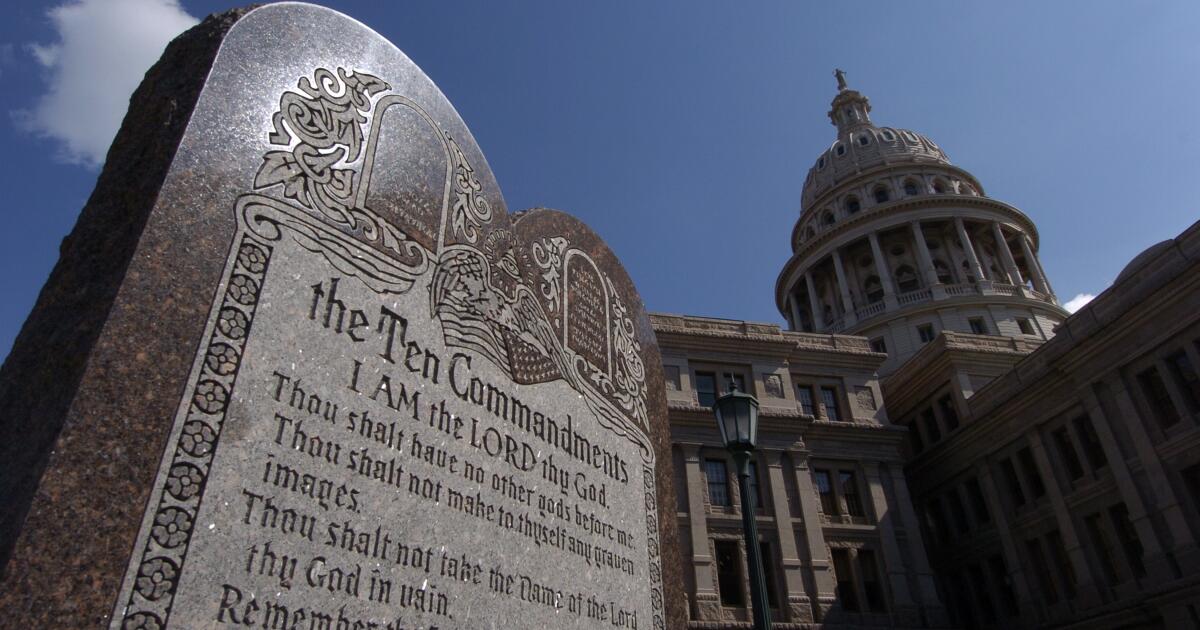The 1st Amendment, and the separation of church and state, America’s best idea, is at risk as never before.
The notion that church and state should be discrete entities was unprecedented when the founders decided to embark on what one historian has called the “lively experiment” of disestablishment. The founders were well aware of the Wars of Religion and the English Revolution, conflicts largely over religious differences.
In addition, as the founders surveyed the religious diversity in the colonies — from Puritans and Baptists in New England to Quakers, Jews, Dutch Reformed Protestants and Presbyterians in the Middle Colonies to more Baptists in the South and Anglicans, Catholics and even Muslims throughout — they realized that designating any one faith or denomination as the American religion would be contentious.
So the founders chose the road not traveled. The 1st Amendment, drafted by James Madison and ratified in 1791, said “Congress shall make no law respecting the establishment of religion” while guaranteeing free exercise for all. Another way to understand this unique configuration is economic. As Adam Smith predicted in his 1776 brief for free-market capitalism, “The Wealth of Nations,” religion will thrive if the government refuses to intervene or favor one faith over another.
American history has more than vindicated Smith’s prediction. Religion has flourished in the United States as nowhere else precisely because the government has stayed out of the religion business.
But the corollary is also true. Religious factionalism has not impeded the functions of government. In other words, the 1st Amendment has worked remarkably well.
As Thomas Jefferson noted in 1808: “We have solved, by fair experiment, the great & interesting question Whether freedom of religion is compatible with order in government, and obedience to the laws[.] & we have experienced the quiet as well as the comfort which results from leaving every one to profess freely & openly those principles of religion which are the inductions of his own reason, & the serious convictions of his own inquiries.”
Others noticed as well. “Half the wars of Europe, half the internal troubles that have vexed European states,” James Bryce, an Oxford University historian, observed in 1893, “have arisen from theological differences or from the rival claims of church and state. This whole vast chapter of debate and strife has remained virtually unopened in the United States.”
The United States has survived numerous attempts to jettison the 1st Amendment. During the Civil War, an organization called the National Reform Assn. sought to amend the Constitution with a revised preamble: “We, the people of the United States, humbly acknowledging Almighty God as the source of all authority and power in civil government, the Lord Jesus Christ as the Ruler among the nations, His revealed will as the supreme law of the land, in order to constitute a Christian government, and in order to form a more perfect union… .”
The group took its proposal all the way to the White House, where Abraham Lincoln wisely temporized, averring that “the work of amending the Constitution should not be done hastily.”
Other attempts include those proposed by the Christian Amendment Assn., which emerged during the Cold War. Members of Congress failed to pass that amendment, but they did add “under God” to the Pledge of Allegiance in 1954 and replaced E pluribus unum (“out of many, one”) with “One Nation Under God” as the national motto in 1956.
More recent attempts to eviscerate the wall of separation between church and state have focused not so much on constitutional amendments as on incremental attacks by way of legislation, with the collusion of the judiciary. The posting of the Ten Commandments in public schoolrooms in Louisiana and Texas and, more important, the use of taxpayer money for religious education represent clear violations of the establishment clause of the 1st Amendment.
Ever since the 19th century, using public money for religious education was a bright line separating church and state. The so-called Blaine amendments, named for James Blaine, speaker of the House of Representatives, senator, secretary of State and Republican nominee for president in 1884, were adopted by 37 states. The amendments originated in anti-Catholic fervor, but their prohibition of public support for religious schools was constitutionally axiomatic for nearly a century.
That seems quaint now, as red states rush to dole out taxpayer-funded vouchers so parents can send their children to religious schools at public expense. Sadly, Donald Trump’s “One Big Beautiful Bill Act” provides tax-credit funding for religious education, and the majority on the Supreme Court is complicit in efforts to undermine the separation of church and state.
If only the Supreme Court had half as much deference for the 1st Amendment as it does for the 2nd Amendment, we’d be in much better shape.
As Justice Sandra Day O’Connor wrote in her final Supreme Court opinion on church-state matters, “Those who would renegotiate the boundaries between church and state must therefore answer a difficult question: Why would we trade a system that has served us so well for one that has served others so poorly?”
Randall Balmer, one of the expert witnesses in the Alabama Ten Commandments case, teaches at Dartmouth College. His latest book, “America’s Best Idea: The Separation of Church and State,” will be released Aug. 5.

